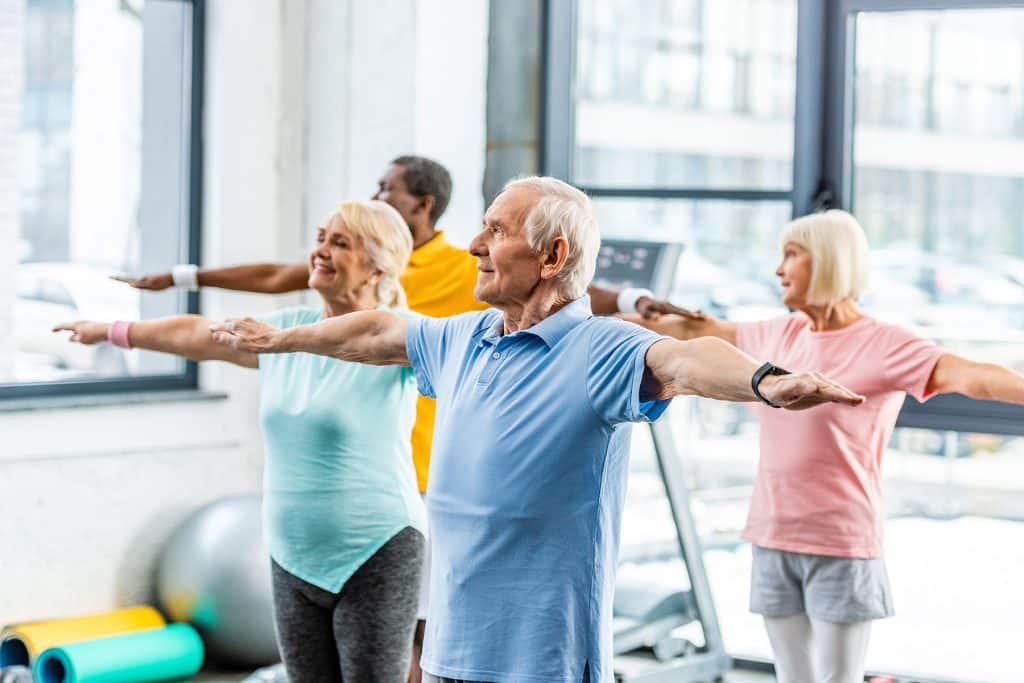Falls are common but often preventable. Improving balance, strength, home safety, and medication review can cut fall risk. Use simple daily exercises, a short home checklist, and seek help from your doctor or physical therapist if you’ve fallen or feel unsteady.
Why this matters
One in four older adults experiences a fall each year, and falls are a leading cause of injury and loss of independence in later life.
Understanding balance and practical steps you can take helps reduce the chance of a fall and builds confidence for everyday activities.
What affects balance as we age?
- Muscle strength: Legs and core weaken over time, making recovery from trips harder.
- Vision and hearing: Poor vision or reduced hearing can affect spatial awareness and balance.
- Medications: Some medicines cause dizziness or drowsiness and increase fall risk.
- Inner ear and nerve changes: Age-related changes can impair balance signals to the brain.
- Environmental hazards: Rugs, poor lighting, and clutter increase the chance of tripping.
How balance training helps
Exercise programs that focus on balance and strength are shown to reduce falls in older people. Regular, practical exercises make everyday movements safer and improve confidence.2
Simple safety tips you can start today
- Wear well-fitting shoes with non-slip soles—avoid loose slippers for walking.
- Keep frequently used items within easy reach to avoid climbing or stretching.
- Use a night-light for bathroom trips and improve lighting in hallways and stairs.
- Remove loose rugs or use non-slip mats under rugs to prevent slipping.
- Talk to your healthcare provider about your medications and any side effects like dizziness.
Quick balance checklist (use weekly)
- Do I feel steadier when I hold onto furniture? If yes, practice standing/walking without support as tolerated.
- Are there loose rugs, cords, or clutter along my usual routes at home?
- Is lighting adequate, especially on stairs and in bathrooms?
- Have I had a recent vision or hearing check? Schedule if not.
- Have I told my doctor about near-falls, dizzy spells, or unsteadiness?
Everyday balance exercises (safe and simple)
Do these exercises 3–5 times per week. Stop if you feel pain and speak with a clinician if you’re unsure.
1. Heel raises
Hold a sturdy chair for support. Rise up onto your toes slowly, hold 1–2 seconds, then lower. Repeat 10–15 times.
2. Sit-to-stand
From a chair, stand up without using your hands if possible, then sit slowly. Repeat 8–12 times to build leg strength.
3. Tandem stance
Stand near a table or counter. Place one foot directly in front of the other and hold for 10–30 seconds. Repeat on the other side. Progress to walking heel-to-toe as you gain confidence.
4. Single-leg stand (advanced)
Stand next to support. Lift one foot and balance on the other for up to 10–20 seconds. Build up slowly and use support as needed.
5. Marching on the spot
Lift knees alternately as if marching, for 30–60 seconds. This helps coordination and endurance.
These exercises focus on balance, strength, and coordination, all of which reduce falls when done regularly.2
Using aids and assistive devices
Walking sticks and walkers provide stability. Have them fitted by a professional and use them consistently if recommended.
Install grab bars by the toilet and in the shower. Non-slip mats inside and outside the shower add protection.
Home safety checklist (room-by-room)
- Entrance & hallways: Clear pathways, secure loose mats, add handrails on steps.
- Living room: Remove clutter, arrange cords away from walkways, keep a lamp near seating.
- Kitchen: Store heavy items at waist height, use a stable step stool if needed.
- Bedroom: Place a lamp reachable from bed, keep a phone nearby, ensure a clear path to bathroom.
- Bathroom: Install grab bars, use a raised toilet seat if needed, add non-slip mats.
What to do after a fall
- Check for injuries. If you suspect a head, neck, or serious injury, call emergency services immediately.
- If you can move, try to get to a stable surface—crawl to a chair, then use it to help you stand.
- If you cannot get up, call for help. Keep warm and make noise to attract attention.
- See your doctor after any fall—even without obvious injury—to find causes and prevent another fall.
When to see a professional
Make an appointment if you’ve fallen, feel unsteady, or have new dizziness. A doctor or physiotherapist can review medicines, assess gait and balance, and recommend tailored exercises.
Specialists can check for vision problems, inner-ear balance disorders, and neurological conditions that contribute to falls.
Medication and medical checks
Some medicines (especially sedatives, some blood pressure drugs, and certain antidepressants) can increase dizziness and fall risk. Ask your provider for a medication review if you’ve had falls or feel drowsy.
Regular vision and hearing checks are also important because sensory loss affects balance.
Staying active and socially connected
Group exercise classes, community balance programs, and walking groups build strength and are motivating. Being active helps both physical balance and mental well-being.
Practical tips for outings
- Wear comfortable shoes with good grip.
- Carry a mobile phone or alarm when you go out.
- Avoid uneven or icy surfaces; take your time when walking on unfamiliar ground.
Fall prevention summary checklist
- Practice balance and strength exercises 3–5 times weekly.
- Review medications with your clinician.
- Improve home lighting and remove trip hazards.
- Have vision and hearing checked yearly or when changes occur.
- Use mobility aids as recommended and install grab bars where needed.
- Seek professional assessment after any fall.
Frequently asked questions
Will balance exercises really reduce my chance of falling?
Yes. Research shows targeted balance and strength training reduces the risk of falls for older adults when done consistently.
How quickly will I see improvement?
Many people notice improvements in confidence and steadiness within weeks, but lasting reduction in fall risk comes from regular practice over months.
Is it safe to exercise alone at home?
Simple, seated or supported exercises are usually safe. If you have significant unsteadiness, start with supervised sessions or ask a physiotherapist for a safe home program.
Take the First Step with a Free Discovery Visit
If you’ve been wondering how to get started, the best step is often having someone guide you. At Delray Care Physical Therapy, I work one-on-one with individuals just like you to build personalized routines of balance stretches and movement strategies.
Together, we focus on what matters most—helping you stay steady, confident, and active long-term.
Book your FREE Discovery Visit today and learn how small, intentional changes can make a big difference in your stability and independence.
Don’t wait for a stumble to remind you how important balance really is—start strengthening it now. Call (561) 350-5397 or click here to book your free discovery visit.
More Free Resources:
Read our other blogs – Fall Prevention: 7 Simple Exercises to Improve Balance and Stability – Delray Care Physical Therapy
See what others are saying – Google Reviews
Book a free telephone consultation – Request A Call Back – Delray Care Physical Therapy

